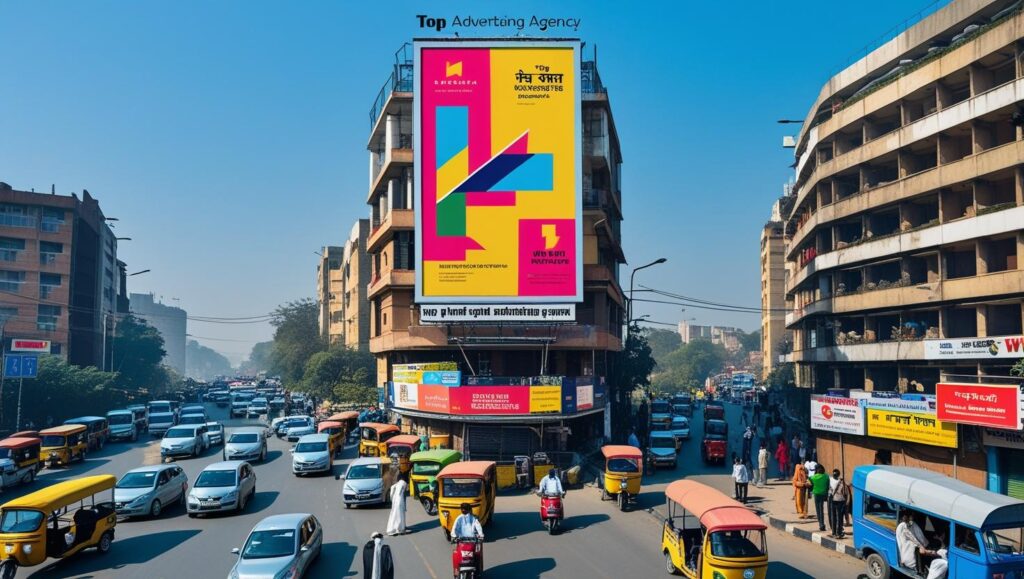The Psychology Behind Successful Hoarding Advertising Designs in Delhi
Introduction: Why Psychology Matters in Hoarding Advertising
Walking through the bustling streets of Delhi, one thing instantly grabs your attention — the massive, eye-catching hoardings towering over busy marketplaces, highways, and metro stations. These billboards are not just large posters; they are carefully crafted psychological triggers designed to influence your mind in mere seconds.
In a city where millions of people are constantly on the move, businesses rely on hoarding advertising in Delhi to capture attention, build brand recall, and persuade potential customers. But what makes some hoardings unforgettable while others fade into the city’s noise?
The answer lies in the psychology behind successful hoarding advertising designs in Delhi.
This article explores the strategies, color theories, consumer psychology, and design secrets that make hoardings powerful marketing tools.
The Science of Attention in Hoarding Advertising
Human brains are naturally wired to notice:
- Bright colors that stand out from surroundings
- Large visuals that trigger curiosity
- Faces and emotions that create instant connection
- Bold typography that can be read in seconds
In Delhi, where traffic signals, metro commuters, and pedestrians provide a few seconds of attention span, advertisers rely on psychological shortcuts to ensure maximum impact.
Key Psychological Strategies Behind Successful Hoarding Advertising
1. The Power of Color Psychology
Colors have the ability to evoke emotions and influence decisions:
- Red & Yellow → Urgency, fast-food chains, discounts
- Blue → Trust, banks, insurance, tech brands
- Green → Eco-friendly, health-conscious advertising
- Black & Gold → Luxury and exclusivity
When brands in Delhi design their hoardings, they align colors with brand identity and consumer expectations, ensuring the right emotional trigger.
2. The Rule of Simplicity
A commuter in Delhi traffic may only glance at a hoarding for 3–5 seconds. That’s why less is more.
Successful hoardings follow the “Three-Second Rule”:
- One strong headline
- One memorable image
- One clear call-to-action (CTA)
This simplicity ensures the message is instantly absorbed.
3. Storytelling Through Imagery
Humans process images 60,000x faster than text.
Brands in Delhi use visual storytelling — a smiling family for healthcare ads, energetic youth for fitness brands, or a luxurious car against Delhi’s skyline for automobile ads.
This storytelling element creates emotional relatability and drives recall.
4. Social Proof and Familiarity
Psychology tells us that people trust what others approve of. That’s why hoardings in Delhi often feature:
- Celebrity endorsements
- Customer testimonials
- Awards & recognitions
This strategy reduces hesitation and builds instant trust.
5. Location Psychology
A hoarding outside a hospital sends a different message than one at a busy marketplace.
Marketers study consumer mood, traffic patterns, and environment before choosing the location. For example:
- Shopping malls → Fashion & lifestyle ads
- Highways → Automobiles, FMCG, real estate
- Metro routes → Tech, education, and OTT platforms
The psychology of location ensures ads meet the right audience at the right time.
Why Businesses in Delhi Should Leverage Psychology in Hoarding Advertising
- Higher Attention Span: Well-designed hoardings outperform digital pop-ups by holding attention longer.
- Brand Recall: Studies show 68% of consumers remember outdoor ads after a week.
- Mass Reach: One strategic hoarding can influence lakhs of daily commuters.
- Cost-Effective Branding: Compared to TV ads, hoardings give longer exposure at lower cost.
Industries That Benefit the Most
- Real Estate: Big visuals + location cues build trust.
- Education & Coaching Institutes: Simple CTAs attract parents & students.
- Healthcare: Use of empathy-driven visuals.
- Retail & E-commerce: Discounts and new launches.
- Luxury Brands: Premium imagery creates aspiration.
How It Works – Step by Step
- Consumer Psychology Research → What motivates your target audience?
- Creative Concept Development → Color, message, and design choices.
- Location Selection → Strategic Delhi spots for max visibility.
- Execution & Printing → High-quality design production.
- Impact Analysis → Measuring recall, leads, and brand lift.
Reviews ⭐⭐⭐⭐⭐
⭐️⭐️⭐️⭐️⭐️ “The psychology-based approach in our hoarding campaign helped us increase walk-ins by 40% in Delhi.” – Rajesh Mehra, Retail Brand Owner
⭐️⭐️⭐️⭐️⭐️ “Color psychology truly works! Our eco-friendly hoardings stood out and boosted brand image.” – Neha Kapoor, Health Brand Marketer
⭐️⭐️⭐️⭐️⭐️ “Strategic placement near metro stations gave us maximum leads. Psychology-driven design was a game-changer.” – Sandeep Arora, EdTech Founder
⭐️⭐️⭐️⭐️⭐️ “We underestimated hoardings, but this psychological design approach gave us ROI better than digital ads.” – Ananya Gupta, Real Estate Developer
⭐️⭐️⭐️⭐️⭐️ “Delhi’s competitive market needs smart strategies, and psychology-driven hoarding designs nailed it for us.” – Rohan Sharma, Automobile Dealer
FAQs
Q1: Why is psychology important in hoarding advertising in Delhi?
A: Because consumer decisions are largely emotional, not logical. Psychology helps influence choices faster.
Q2: Which colors work best in Delhi hoardings?
A: It depends on your brand. Red & yellow for urgency, blue for trust, green for eco-friendly, and black/gold for luxury.
Q3: How long should a hoarding message be?
A: No more than 7–10 words. Simplicity ensures better recall.
Q4: Can hoarding ads beat digital marketing?
A: They complement each other. Hoardings provide mass recall, while digital captures conversions.
Q5: How do I measure success in hoarding advertising?
A: Through brand recall surveys, sales uplift, and lead tracking via unique contact details.
Conclusion: Turning Psychology Into Profits
In a city as vibrant and competitive as Delhi, hoarding advertising is not just about being visible — it’s about being memorable. By leveraging the psychology behind successful hoarding advertising designs in Delhi, brands can connect emotionally, stand out in crowded streets, and ultimately influence buying decisions.
If you’re a business looking to dominate Delhi’s market, don’t just design a hoarding — design an experience rooted in consumer psychology. That’s the real secret behind impactful outdoor advertising.
